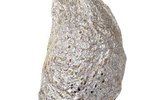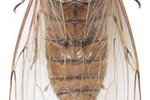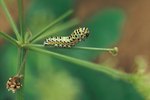If you look outside and spot what look to be little pinecones hanging from your trees and shrubs, only one type of bug is responsible for the structures: bagworms. Inside the pinecone-like bags you'll find either one bagworm or hundreds of little eggs. The insects can defoliate and severely damage and even kill plants.
Bag Making
When spring arrives, eggs that female bagworms laid in fully-developed bags during the previous fall hatch. The larvae that emerge begin feeding on the host plant by crawling to and eating leaves. Some larvae suspend themselves on silk strings and get blown by the wind to new plants or new areas of the host plant. Each then creates a little bag made of silk over its abdomen. As a larva feeds, it adds piece of leaves and twigs to its bag, making it larger and larger throughout the spring and summer. Towards the end of summer the larva has an impressive bag that measures around 2 inches in length. It then wraps the top of the bag around a twig using silk. The bag hangs down, looking similar to a pinecone.
Purpose of Bag
A bagworm's pinecone-like bag serves one primary purpose: protection. It enables the female's eggs to properly develop over winter and keeps insects and other predators away. When larvae begin feeding and creating bags of their own, they withdraw into them when they rest or feel threatened. Once they hang their bags from twigs in the fall or at the end of summer, larvae retreat into them to molt. Later in fall, males enter the world as fully grown moths. The females, which do not evolve into moths, remain in their bags, waiting for males to find and mate with them, and then the process begins all over again.
Danger
Bagworms aren't pretty, especially when they create bags on trees that look quite strange with pinecone-like structures hanging from them. But aesthetics aside, they can pose serious dangers to trees and shrubs. The University of Kentucky College of Agriculture, Food and Environment points out that older larvae can strip needles from evergreens and obliterate whole leaves of deciduous trees and plants. The university further notes that several years of heavy infestation can lead to plant death.
Removal
Preventing bagworm infestation calls for removing the bags that hold unhatched eggs. Iowa State University's Integrated Pest Management Program suggests cutting them down with scissors and disposing of them before they hatch—by about early spring. If the larvae have already hatched, you can use insecticides to kill them. Common insecticides used to treat bagworm infestations include those that have spinosad, carbaryl, acephate, permethrin or malthion as the main ingredient. Always follow the manufacturer's directions to the letter when using insecticides, and if you're unsure of which insecticide to use, contact your local county agricultural extension office.
References
Writer Bio
Located in Pittsburgh, Chris Miksen has been writing instructional articles on a wide range of topics for online publications since 2007. He currently owns and operates a vending business. Miksen has written a variety of technical and business articles throughout his writing career. He studied journalism at the Community College of Allegheny County.





